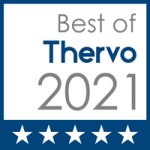- Call for a FREE Consultation
410-984-3700 - Sign up to receive news and updates and get my free report:“The Top 10 Reasons to Try Acupuncture”

- Unsubscribe at any time.

-
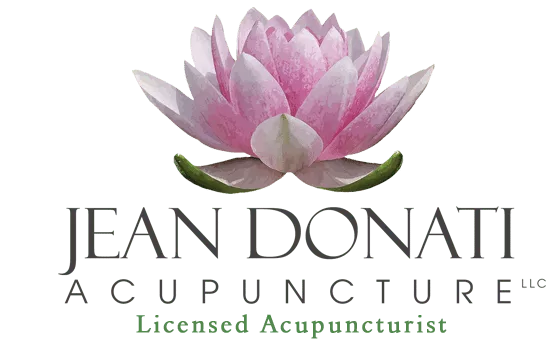 Jean Donati Acupuncture604 E. Joppa RD
Jean Donati Acupuncture604 E. Joppa RD
Towson, MD 21286410-984-3700 -
Latest Articles:
- • Spring Clean Your Way to Better Health •
- • 5 Healthy Ways to Embrace the Spring Season •
- • Fun Things to do this Spring •
focus
Acupuncture for Anxiety or Panic
Acupuncture and Acute Stress…Adrenalin and Acupuncture.
 Did you ever have one of those days….You are sleeping soundly then all of the sudden you are awake. You look at the clock, and…Oh NOOOooo…What happened to the alarm? You wake up 15 minutes before you have to leave for work. It is a pretty upsetting feeling. You feel rushed and anxious. Am I going to get to work on time? Your blood pressure is elevated, and you are aggrevated. You yell at the traffic for being slow. It upsets your body and your your energy for the entire day.
Did you ever have one of those days….You are sleeping soundly then all of the sudden you are awake. You look at the clock, and…Oh NOOOooo…What happened to the alarm? You wake up 15 minutes before you have to leave for work. It is a pretty upsetting feeling. You feel rushed and anxious. Am I going to get to work on time? Your blood pressure is elevated, and you are aggrevated. You yell at the traffic for being slow. It upsets your body and your your energy for the entire day.
This happened to me this morning, so I would like to let you know you what is happening in your body, and what you can do to alleviate those rushed, anxious, and upsetting feelings. First take a deep breath. What you are experiencing is normal. You woke up late and perhaps were startled. Your nervous system has kicked in with adrenalin.
Adrenaline, also called epinephrine, is a hormone produced by your adrenal glands. Adrenaline is known as the “fight or flight” hormone and is released in response to a stressful, exciting, or threatening situation. Adrenaline enables your body to respond quickly to these situations by enabling the heart to beat faster, the blood-flow to increase to the brain and muscles and stimulates the body to make sugar to use as fuel.
When you experience an “adrenaline rush” there is a perception of a threat that sent to the amygdala, the part of the brain responsible for emotional processing. This signal communicates to the rest of the body through the nervous system. Symptoms include a boost of energy, rapid breathing, increased heartbeat, and perspiration. This rapid process allows you to dodge out of harms way quickly and return to safety. To assist with returning to equilibrium, it is important to allow the body to rest and repair itself.
Acupuncture along with deep breathing and meditation clearly benefits every aspect of the body and can return it to its normally calm state. There are some acupuncture points to help you with an acute stress reaction or panic attack. Gently massaging these points can help get you back on track and ease your symptoms and energy.
Shenmen (HT7), also called Spirit Gate, is one of the major points on the heart meridian or energy pathway. Because it can nourish the blood, calm and cool down internal fire, it is a good point to calm the mind, clear the emotions and help with anxiety, stress, insomnia, agitation, and palpitations. Shenmen, is located at the wrist crease on the radial side of the arm, where your pinky finger is.
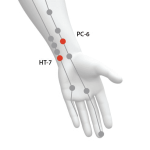 Neiguan (PC 6), also called Inner Frontier Gate, goes to the chest and opens it up. It allows you to breathe easier, stops racing of the heart and palpitations. It calms your spirit or “shen” and mind, so it is helpful for racing and fragmented thoughts. It is also a great point to open the chest and the heart, counteracting the contracting energy of anxiety. This point is also located on the inside of the forearm, about two inches down from the wrist crease, in the middle of the forearm between the two tendons. This point is also good for nausea which can accompany anxiety.
Neiguan (PC 6), also called Inner Frontier Gate, goes to the chest and opens it up. It allows you to breathe easier, stops racing of the heart and palpitations. It calms your spirit or “shen” and mind, so it is helpful for racing and fragmented thoughts. It is also a great point to open the chest and the heart, counteracting the contracting energy of anxiety. This point is also located on the inside of the forearm, about two inches down from the wrist crease, in the middle of the forearm between the two tendons. This point is also good for nausea which can accompany anxiety.
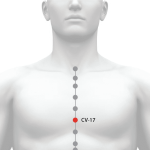 Tanzhong, (CV 17), also called Middle of Chest is a very calming point for the mind and heart. It is helpful to calm the palpitations that come with anxiety. It opens the chest and relaxes the diaphragm. It is located in the center of the chest, on the median line just between the nipples at the 4th intercostal space.
Tanzhong, (CV 17), also called Middle of Chest is a very calming point for the mind and heart. It is helpful to calm the palpitations that come with anxiety. It opens the chest and relaxes the diaphragm. It is located in the center of the chest, on the median line just between the nipples at the 4th intercostal space.
 Yongquan, (KD 1), also called Bubbling Spring, calms the mind and clears the brain. It is a very grounding point for the body, mind and spirit. Kidney 1 has a strong downward moving energy that helps settle the mind when someone is stuck in their head. It connects us to the earth and gives us back out footing. It is located on the sole of the foot approximately 1/3rd the way from toes in the depression when to toes are pointed.
Yongquan, (KD 1), also called Bubbling Spring, calms the mind and clears the brain. It is a very grounding point for the body, mind and spirit. Kidney 1 has a strong downward moving energy that helps settle the mind when someone is stuck in their head. It connects us to the earth and gives us back out footing. It is located on the sole of the foot approximately 1/3rd the way from toes in the depression when to toes are pointed.
So next time you are feeling stressed from whatever reason, remember these calming acupuncture points. Massaging this points with mild pressure for 15-30 seconds (up to 3-5 minutes) can help reduce anxiety stress and panic and put you back into control. Take the time to take care of your body mind and spirit. Jean Donati Acupuncture is here to help ease your nervous system back into calm. Give us a call 410-984-3700.
Post Traumatic Stress Disorder and Acupuncture
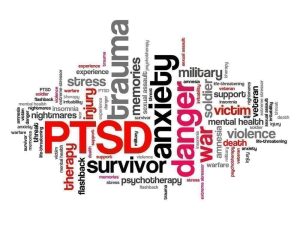
PTSD and Acupuncture
Those who have experienced trauma including, physical, emotional and sexual trauma can experience Post Traumatic Stress Disorder for months to years after the initial event. Traumatic events can include physical events such as experiencing or witnessing a car accident or near-death experience, physical combat such as faced by veterans in war, and sexual trauma in the form of incest, rape or unwanted sexual encounters. Individuals can carry the remnants of those events with them for a long time. These remnants often continue to affect them in profound ways, disrupting their relationships, their overall mental health, and their daily lives. Acupuncture is one of the modalities which can address the physical and emotional aftermath of traumatic events and assist on the path of healing.
What is PTSD?
PTSD is a physiological disorder that can result from being exposed to any traumatic event. The disorder results in symptoms that can be different for each individual.
Possible symptoms include:
- Some PTSD sufferers relive the traumatic event over and over. Flashbacks, memories, and nightmares are common. Often, sounds, smells, and sights can trigger a flashback.
- Avoidance is also common. Individuals with PTSD avoid people, places and events that remind them of the event.
- Numbing is another self-preservation mechanism. Numbing can include difficulty expressing emotions, loss of interest in enjoyable activities, and the loss of memory of parts of the traumatic event. Certain memories may resurface yeas after the event took place. This is a common occurrence.
- Arousal can be exhibited by anger, irritability, trouble concentrating or sleeping, feeling on guard and being easily startled or surprised.
The effects of post-traumatic stress disorder in someone’s life can be wide ranging. An individual with PTSD may have feelings of hopelessness, shame and despair. There may be problems at work. Relationships may be strained. Serious health conditions such as depression, anxiety and drug or alcohol abuse are not uncommon. Other health issues include insomnia, stress, anxiety, depression, digestive disorders, anorexia, bulimia, difficulty with concentration and focus, and headaches.
How Can I Help my Friend or Relative with PTSD?
There are many ways you can help your friend or relative with PTSD.
- Learn everything you can about PTSD. Knowledge is power. The more you know about the disorder, the better you can understand what your friend is going through and why they are responding the way they are to specific triggers.
- Offer your assistance. This may be going to physician visits with them, keeping track of medications, or going with them to therapy. If your friend is learning new techniques to cope with stress try learn the new techniques with them. Be supportive as possible.
- Be available and fully present to listen. Listen with a compassionate open heart. Don’t judge, argue, or problem-solve. Your friend my not be willing or able to talk. That is ok, just sitting with someone in silence may be what they need.
- Plan fun activities to get them out and about. Be aware of events or environments that are difficult and plan events to be as stress-free as possible.
- Pay attention to any comments about hurting themselves and report them to the therapist or doctor. If necessary, call 911.
- Sometimes supporting someone with PTSD is challenging. Get support for yourself so you are able to help your friend or loved one. Seek safety and help immediately if your friend or relative becomes violent or threatening.
PTSD Crisis Resources
If you or your loved one is in crisis:
- Call 911.
- Go to your nearest Emergency Room.
- Call the National Suicide Prevention Lifeline: 1-800-273-TALK (1-800-273-8255).
- Call the National Suicide Prevention Lifeline in Spanish/Español 1-888-628-9454.
- Go to the veterans crisis website at https://www.veteranscrisisline.net/ to chat live with a crisis counselor at any time of day or night.
- Call the National Sexual Assault Hotline at 1-800-656-4673 or chat online 24/7 at https://www.rainn.org/resources
There are many new treatments available for people who have experienced physical, emotional or sexual abuse, assault, and trauma. Acupuncture can foster a safe environment for healing and growth. Jean Donati Acupuncture has experience in treating patients with PTSD. For more information, please call 410-984-3700 for a confidential discussion.







